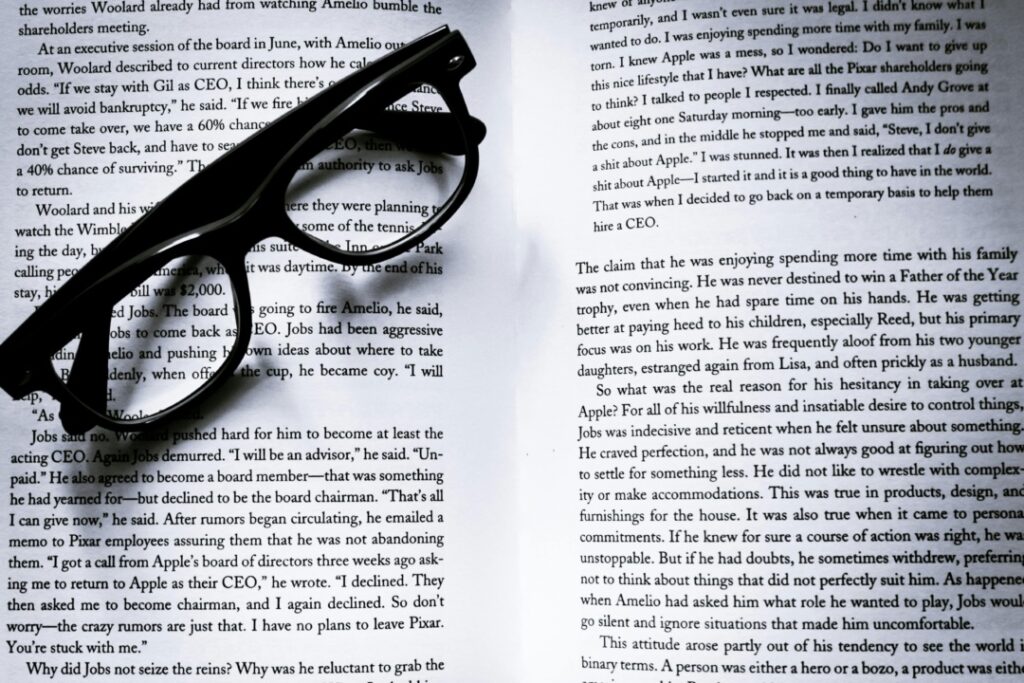There can be many reasons for needing to transcribe spoken speech, whether it being an audio file or a video. The text might be useful for academic, corporate, or private reasons, where the written text comes in handier than the spoken content. However, getting easy access to transcriptions has not always been given. For many years, transcription has been a manual process. That was until the 1970s when the first automatic speech recognition (ASR) system was created, which was the first step towards the technological evolution for transcription technologies, which continues to evolve today.
The latest technology is AI-based, where various platforms can offer fast and easy transcriptions. Take for example Happy Scribe’s audio to text converter, which is a simple yet efficient way to get audio files transcribed: All you have do is upload your file, chose one of the 120+ languages available on the platform, and then proofread and finalize the transcript.
The early days for ASR
Although the 1970s became the decade when ASR was introduced to the public, the foundations for the ASR were established in the 1950s. It was researchers at Bell Laboratories which started to build systems with the ability to recognize isolated spoken digits. This ability was based on primitive pattern matching algorithms. The evolution of ASR then continued in 1970, when a five-year research program at Carnegie Mellon University was established, focusing on developing the first large-vocabulary, speaker-independent, continuous speech recognition system.
Throughout the 1980s and 1990s, models emerged to identify acoustic properties of speech. The scope of recognizing vocabulary was expanded, along with the improvement of accuracy.
Technological breakthroughs
One of the biggest breakthroughs for transcription technologies came in the late 1980s when artificial neural networks were introduced. Being a machine learning approach, it was an effective way to model the complex relationships between phonetic units in the spoken language and acoustic signals from speech.
Another remarkable breakthrough was in the 2000s, when deep neural networks (DNNs) were developed. DNNs included techniques like convolutional and long short-term memory layers. In other words, the accuracy of previous systems was improved, leading to many tech companies adopting ASR.
How ASR is doing today
ASR systems today are built on deep learning algorithms, which runs on specialized hardware. Platforms like Happy Scribe can transcribe speech with over 95% accuracy, leaving people with texts in optimal conditions.
Even though the transcriptions are not perfect, errors are infrequent, and the result is a natural conversational interface. This has led to many opportunities for consumers, who can transcribe videos for subtitle purposes, transcribe meetings and lectures, or quickly make transcriptions of interviews.
An outlook of ASR
Happy Scribe is already a highly advanced service for anyone needing transcriptions or subtitle services across multiple languages. This makes it possible to for example use AI technology to provide subtitles for sci-fi movies, and other sci-fi video and audio content. But this does not mean that the service is perfect, because even though ASR has come a long way, there are still frontiers of improvement. Some of the current challenges, which will be further developed with time and technological improvements, include accented speech, domain-specific vocabulary, voice impairments, and noisy environments.
The technology to address these challenges is being researched and developed. Converting speech to text is based on representations tied to full sentences, instead of only smaller phonetic units. Furthermore, multimodal approaches are being researched, which combines acoustic, visual, and linguistic cues. This could ultimately improve robustness of the transcribed text. Additionally, deep learning has been the foundation for the new era for speech recognition, was there is an abundance of data and computer power. Ultimately, this could result in ASR meeting human parity for some applications.
The AI-based speech recognition industry
According to Verified Market Research, the global speech recognition market size was valued at USD 7.3 billion in 2021. Furthermore, market projections show that the industry could reach USD 35.1 billion by 2030, which would mean it grows as a CAGR of 17.4% between 2022 and 2030.
The key factors that are growing this development are especially the proliferation of smart devices, and the advancement of deep learning and cloud computing. These elements are coupled with other factors such as a growing demand for productivity and convenience, and the growing usage of voice-first interfaces and virtual assistants.
The interplay between humans and AI
For many, the question about the role of AI and how it is advancing to a point of mimicking human abilities is an ongoing discussion across the world. The interplay between humans and AI contains so much potential, as the technologies behind speech recognition can optimize time and production of speech recognition and transcription processes. However, just because platforms like Happy Scribe have been developed to a point where it can produce almost flawless transcriptions, it does not mean that it replaces the skills of humans completely.
The human touch of correcting and verifying the produced text is still needed, to ensure a natural and correct output. This means that instead of perceiving AI as something that is taking over human inputs, it should instead be viewed as an ongoing support system, which relied on human input for the perfect result. In other words, these speech recognition systems provide the perfect possibility to save time and energy which is spent better in other places, still resulting in a useful written output.
Caroline is doing her graduation in IT from the University of South California but keens to work as a freelance blogger. She loves to write on the latest information about IoT, technology, and business. She has innovative ideas and shares her experience with her readers.






